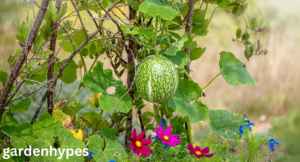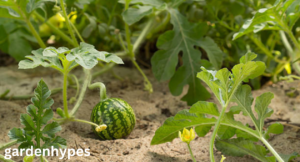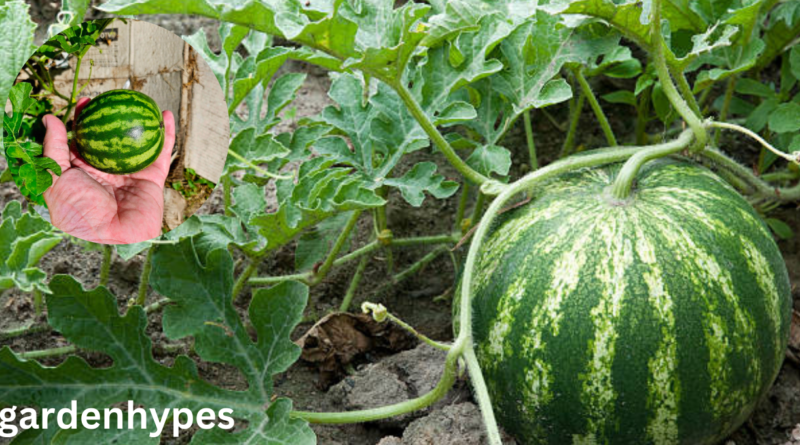What Does a Watermelon Plant Look Like
Introduction to the Watermelon Plant
When most people think of Watermelon Plant Look Like, the image that comes to mind is a large, juicy fruit perfect for summer days. But before this delicious fruit makes it to your table, it starts as a humble plant with unique features. The watermelon plant (Citrullus lanatus) is part of the cucurbit family, which includes cucumbers, pumpkins, and squash. While all of these plants share certain similarities, the watermelon has its own distinctive appearance that sets it apart.
click in link Strawberry plant look like
Understanding what a watermelon plant looks like is helpful for gardeners, farmers, and even curious observers who want to identify it in the field. Since watermelon plants grow differently from many other crops, recognizing their vine structure, leaf shapes, and flower formations can prevent confusion with similar plants. For new gardeners, being able to spot a watermelon plant at different stages—from seedling to fruit-bearing—can make the growing process much easier.
One of the most striking things about watermelon plants is their sprawling nature. Unlike tall upright crops, watermelons spread across the ground, sending out vines that can cover several feet of soil. Along these vines, you’ll find broad leaves, tendrils, yellow flowers, and eventually the developing fruits. Each of these features tells a story about the plant’s growth and health.
In this article, we’ll break down the exact appearance of a watermelon plant, covering everything from its leaves, vines, and flowers to its fruits and root system. By the end, you’ll be able to identify a watermelon plant in any garden with ease. So, if you’ve ever wondered what the plant behind your favorite summer fruit looks like, let’s explore it step by step.
General Appearance of a Watermelon Plant
At first glance, a watermelon plant may look like a messy tangle of green vines crawling across the ground. Unlike crops that grow in a straight, upright fashion, watermelon plants have a low, sprawling habit. The vines creep along the soil, sometimes stretching up to 10 feet or more in length, depending on the variety and growing conditions. This spreading behavior allows the plant to cover large areas quickly, making it both beautiful and slightly wild-looking.
The leaves of the plant are deeply lobed, giving them a jagged or rough outline. These leaves grow alternately along the vine, creating a lush covering that shades the soil and helps retain moisture. The color of the foliage usually ranges from medium green to dark green, often with lighter veins running through each leaf. Because of their distinct lobes and rough texture, watermelon leaves are fairly easy to recognize once you know what to look for.
The plant itself doesn’t grow tall; instead, it stays close to the ground. Unlike corn or tomatoes that rise vertically, watermelon prefers to sprawl outward, which makes it ideal for gardens with plenty of horizontal space. As the plant grows, it sends out small curling tendrils. These tendrils are thin, coiled structures that help the plant grip onto nearby objects, giving it some support and stability.
If you stumble upon a patch of watermelon plants in the field, you’ll likely see a dense carpet of green vines spreading in every direction. Hidden among the leaves, you’ll notice small yellow flowers scattered along the vines. Later in the season, these flowers give way to the iconic fruits—round or oval watermelons with thick, striped rinds. Altogether, the general appearance of a watermelon plant is vigorous, sprawling, and easily identifiable once you’re familiar with its features.
Watermelon Leaves: Shape and Features
One of the easiest ways to recognize a watermelon plant is by looking closely at its leaves. Watermelon leaves have a very distinctive shape that sets them apart from many other garden plants. They are deeply lobed, meaning each leaf looks almost like it has been cut into three to five separate sections. This gives the leaves a jagged, irregular outline that some people compare to oak leaves or even dragon-like wings.
The leaves are usually quite large, often measuring between 4 and 8 inches long, though this can vary depending on the variety. Their surface is slightly rough and hairy, which helps protect them from pests and reduces water loss. The color of watermelon leaves is typically a dull or medium green, rather than a shiny bright green. Veins are clearly visible, running throughout the leaf in a branching pattern.
click in link Strawberry plant look like

New gardeners sometimes confuse watermelon leaves with pumpkin or squash leaves since they belong to the same plant family. However, there are key differences. Pumpkin leaves are much rounder and smoother along the edges, while watermelon leaves have deeper lobes and a more rugged appearance. If you hold a pumpkin leaf next to a watermelon leaf, the contrast becomes obvious.
As the plant grows, these leaves play an important role in photosynthesis, providing the energy needed for fruit development. They also shade the soil, which helps keep it cool and prevents weeds from taking over. Observing the health of the leaves is a good way to judge the overall health of the plant. Yellowing, curling, or spotted leaves can signal nutrient deficiencies, pests, or diseases.
In short, watermelon leaves are jagged, lobed, and slightly rough to the touch, making them one of the most recognizable parts of the plant. Once you learn their unique shape, spotting a watermelon plant becomes much easier.
Watermelon Stems and Vines
The stem and vine system of a watermelon plant is another defining feature. Unlike plants with a single sturdy stem, watermelons produce long, creeping vines that spread in every direction. These vines are typically light green when young but become thicker and tougher as they mature. Covered in fine hairs, they feel slightly rough when touched.
The main stem branches into multiple secondary vines, which can stretch across the garden floor. Depending on the variety, these vines can grow anywhere between 6 and 15 feet long. Because they sprawl so widely, watermelon plants require a good amount of garden space—or creative trellising if grown vertically.
One interesting feature of the vines is the presence of tendrils. These are thin, curly, string-like structures that grow along the stem. Tendrils are like the plant’s natural hooks, allowing the vines to grip onto supports or nearby plants. If you’re growing watermelons near a fence, you might notice the tendrils wrapping around the wire for stability.
The vine system is crucial because it carries water and nutrients from the roots to the leaves, flowers, and fruits. A healthy, strong vine is essential for producing large, sweet watermelons. Weak or damaged vines often result in smaller fruits or poor yields.
From a visual standpoint, the sprawling vines give watermelon plants their wild and expansive look. When you see a patch of them in the field, it can seem like a green web spread across the ground, dotted with flowers and young fruits. The combination of thick stems, branching vines, and curling tendrils is one of the most characteristic aspects of the watermelon plant’s appearance.
Watermelon Flowers: Male and Female
As the watermelon plant matures, it produces small but noticeable flowers along its vines. These flowers are typically bright yellow and around 1 inch in diameter. They have a delicate, five-petaled structure that makes them easy to spot among the deep green leaves.
What’s fascinating is that watermelon plants produce both male and female flowers on the same vine, a condition known as “monoecious.” Male flowers usually appear first in large numbers, followed by fewer female flowers. Male flowers are attached by thin stems and contain stamens filled with pollen. Female flowers, on the other hand, can be identified by a small, round swelling just below the petals. This swelling is actually the ovary, which later develops into the fruit if pollination occurs.
Pollination is essential for fruit production, and in most cases, bees and other pollinators transfer pollen from the male to the female flowers. Without this process, the small swelling beneath the female flower will wither and fall off instead of growing into a watermelon.
Visually, the flowers add a touch of brightness to the otherwise green plant. In a large patch, you may see dozens of yellow blossoms scattered across the vines, each one a potential beginning of a watermelon. Gardeners often check the flowers carefully to monitor the plant’s progress and to ensure that both male and female flowers are present.

These blossoms are not only functional but also a key part of identifying the plant. If you see sprawling vines with deeply lobed leaves and small yellow flowers, you’re almost certainly looking at a watermelon plant.
faqs
- What color are watermelon plant flowers?
Watermelon flowers are bright yellow and usually about an inch wide. They have five petals and grow along the vines. Both male and female flowers are yellow, but the female ones can be identified by a small round swelling just beneath the bloom, which later develops into the fruit. - How big do watermelon vines grow?
Watermelon vines can grow anywhere between 6 and 15 feet long, depending on the variety and growing conditions. Some large varieties can even sprawl beyond 20 feet. This is why watermelons need plenty of space in the garden to spread out properly. - Can you identify watermelon plants in the early stages?
Yes, but it takes a trained eye. In the seedling stage, watermelon plants have small, oval-shaped cotyledons (the first leaves) that look similar to other cucurbit plants like cucumbers or pumpkins. The real giveaway comes once the true leaves grow in—they are deeply lobed and jagged, unlike the rounder leaves of pumpkins or cucumbers. - Do watermelon leaves look like pumpkin leaves?
They are similar but not identical. Both belong to the cucurbit family, so they share some traits. Pumpkin leaves are rounder, smoother, and larger, while watermelon leaves are more jagged, deeply lobed, and slightly rough in texture. Once you compare them side by side, the differences are clear. - How can I tell when a watermelon is ready to harvest?
Look for several signs: the underside of the fruit (where it rests on the ground) should turn from white to a creamy yellow, the tendril closest to the fruit usually dries up, and the rind should have a dull rather than shiny appearance. Knocking on the fruit for a “deep hollow sound” is another classic method growers use.
